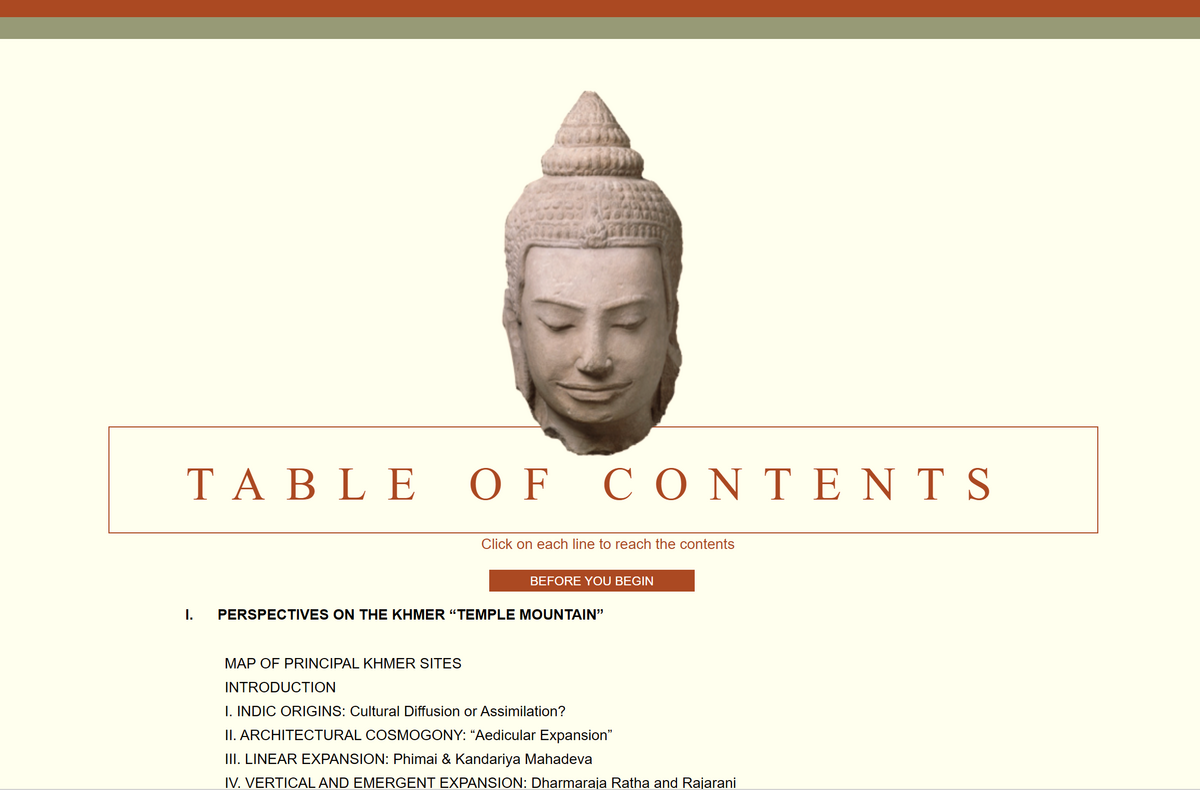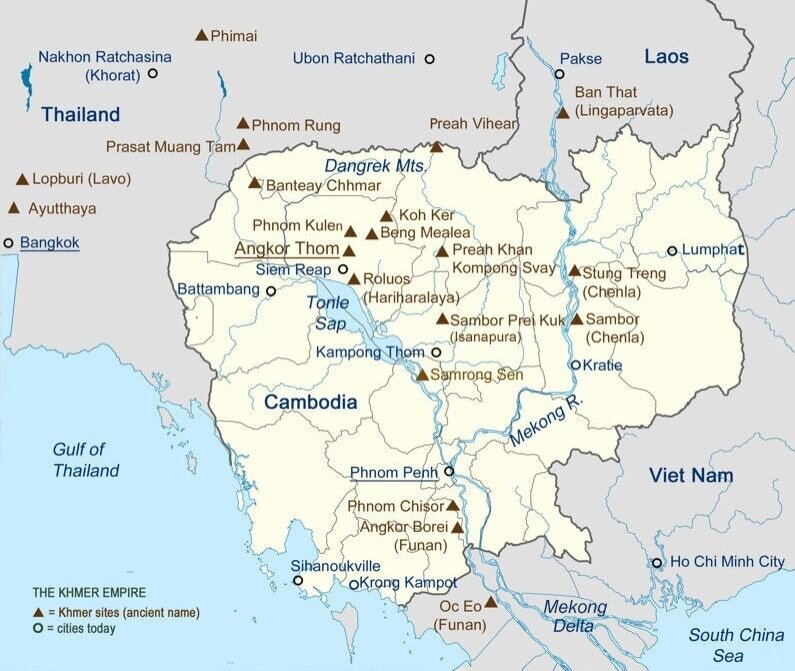TempleMountains
A website devoted to some 60 Khmer temples and monuments, with a comparative presentation of Indian and Yucatan Maya temples.

Published: 2019
Language : English
This useful platform focuses on the structural architecture and cultural environment of some 60 Khmer temples and monuments, each one presented with details ground plans and historic background.
An “expanding survey of “temple mountain” traditions in South, Southeast Asia and beyond”, the website displays crisp general views and architectural details. An introduction and several appendices deal with spatial representations in ancient India and Cambodia, “Buddhist ontology” and other subjects. Comments often differ in tone and substance from the academic works that have been devoted to these temples, with quite controversial statements. For instance, discussing the apsaras at Bayon, the authors boldly state that
Apsaras are Khmer sisters of Greek “aurai,” “wind nymphs” or “breezes” who could be heard and felt but not seen, their billowing robes indistinguishable from clouds; like apsaras, they too were nikes or “winged-victories,” singing paeans over heroes at the moment of their short-lived triumphs. They might also be seen as the Khmer equivalent of angels except without a god to send them on errands announcing his admonitions. They may represent the aesthete’s dream of any refined court, a life sans souci, whether in Frederick’s Charlottenburg, Heian Kyoto or Renaissance Urbino, of a life where taste could be cultivated as its own end, relieved of the bitter struggle needed to sustain it. This idyll is also glimpsed in the hazy intimations of the heavens (perhaps never fully realized or realizable) on the eastern section of Angkor Wat’s southern gallery, above the hells which remain as vivid today, as the world we live in.
The ideal of bliss necessarily changed between the reigns of Survavarman II, the “post- traumatic stress” from which Jayavarman VII’s empire was recovering and the sense of irreversible decline under Jayavaraman VIII. In Angkor Wat’s 2nd gallery apasras are portrayed, not so much dancing as swaying, poised gracefully, possessing the peculiar Khmer quality of sensuality without sexuality, a charm which may lie in their self-possession and indifference to the viewer. In contrast the thousands of apsaras which decorated Jayavarman VII’s foundations can seem like gyrating cheerleaders, springing gymnastically, even manically, from foot to foot, like puppets jerked by strings or wind-up toys, knowing just one step, their legs and arms always flexed at the same acute angle like a chorus line. Perhaps their exaggerated peppiness can be excused as a response to that monarch’s snatching victory from the jaws of defeat, however brief that renewal may have been but they seem to try too hard. The characteristic S‑curves of Angkor Wat’s apsaras from the skirt across their bodies to the lotus stalks they hold, stiffen at the Bayon into angular zig-zags, arms and hands flailing in all directions a far cry from the subtle mudras of classical Bharatanatyam or, for that matter, the kbach of today’s ersatz Apsara Dance. Not too much need be made of the noticeable decline in artisanship at the Bayon; as in most matters, the quality of sculpture seems to have been inversely related to its quantity, victims of Jayavarman’s VII’s “excessive (architectural) exuberance” and Jayavarman’s VIII’s strident Hindu fundamentalist propaganda, a Narendra Modi for his times.
From the presentation: “Templemountains.org is a project of the Angkor and Beyond Resource Group, an informal collaboration by former visitors who wanted to learn more about these remarkable temples.None are architects, archaeologists, Khmer specialists or professional educators, simply autodidacts who have learned enough to know how much more there is to learn. Thus, the site inevitably contains errors, omissions, typos, inexact terminology and incomplete, as well as unnecessary, information. It will succeed if its deficiencies spur its users to delve more deeply into the abundant scholarly research on Angkor it has barely scratched.”
This platform seems to be linked to the Beyond Angkor Project, launched in the early 2000s by Melbourne-based Allan Lim and Thailand-based Mark Ord, with numerous Cambodia-based contributors and researchers.
Map of the sites covered by the research. [by TempleMountains.org]
Tags: research tools, Khmer architecture, comparative architecture, temple-mountain

